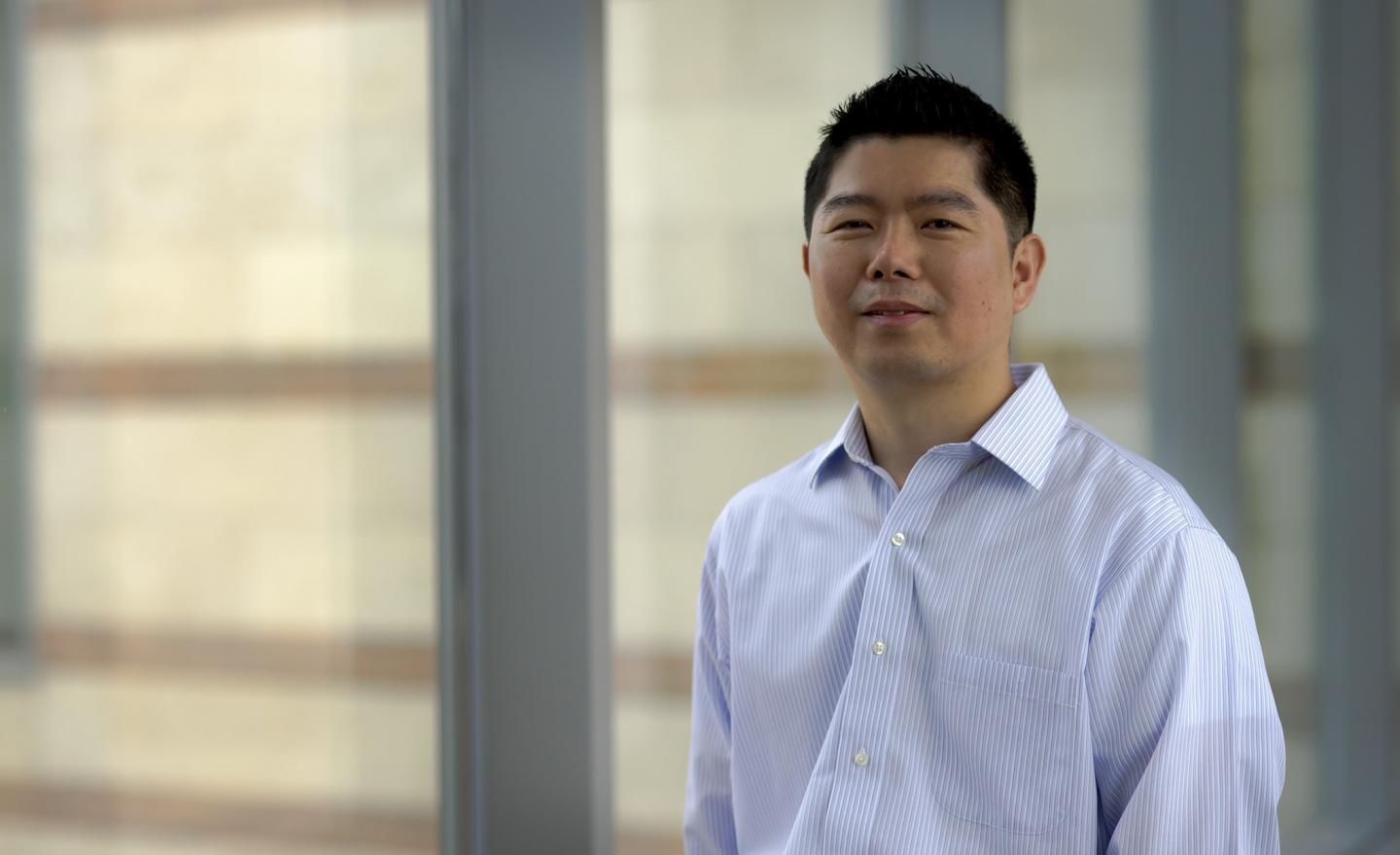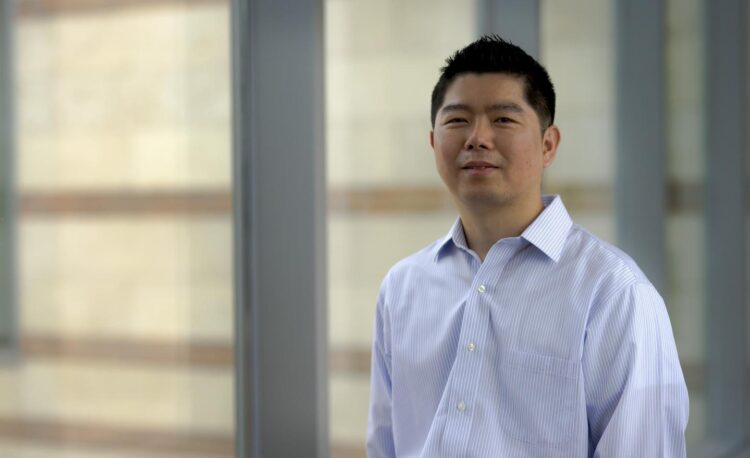UTA breakthrough: 2D materials capable of forming complex 3D shapes

Credit: UT Arlington
University of Texas at Arlington researchers have developed a technique that programs 2D materials to transform into complex 3D shapes.
The goal of the work is to create synthetic materials that can mimic how living organisms expand and contract soft tissues and thus achieve complex 3D movements and functions. Programming thin sheets, or 2D materials, to morph into 3D shapes can enable new technologies for soft robotics, deployable systems, and biomimetic manufacturing, which produces synthetic products that mimic biological processes.
Kyungsuk Yum, an associate professor in the Materials Science and Engineering Department, and his team have developed the 2D material programming technique for 3D shaping. It allows the team to print 2D materials encoded with spatially controlled in-plane growth or contraction that can transform to programmed 3D structures.
Their research, supported by a National Science Foundation Early Career Development Award that Yum received in 2019, was published in January in Nature Communications.
“There are a variety of 3D-shaped 2D materials in biological systems, and they play diverse functions,” Yum said. “Biological organisms often achieve complex 3D morphologies and motions of soft slender tissues by spatially controlling their expansion and contraction. Such biological processes have inspired us to develop a method that programs 2D materials with spatially controlled in-plane growth to produce 3D shapes and motions.”
With this inspiration, the researchers developed an approach that can uniquely create 3D structures with doubly curved morphologies and motions, commonly seen in living organisms but difficult to replicate with man-made materials.
They were able to form 3D structures shaped like automobiles, stingrays, and human faces. To physically realize the concept of 2D material programming, they used a digital light 4D printing method developed by Yum and shared in Nature Communications in 2018.
“Our 2D-printing process can simultaneously print multiple 2D materials encoded with individually customized designs and transform them on demand and in parallel to programmed 3D structures,” said Amirali Nojoomi, Yum’s former graduate student and first author of the paper. “From a technological point of view, our approach is scalable, customizable, and deployable, and it can potentially complement existing 3D-printing methods.”
The researchers also introduced the concept of cone flattening, where they program 2D materials using a cone surface to increase the accessible space of 3D shapes. To solve a shape selection problem, they devised shape-guiding modules in 2D material programming that steer the direction of shape morphing toward targeted 3D shapes. Their flexible 2D-printing process can also enable multimaterial 3D structures.
“Dr. Yum’s innovative research has many potential applications that could change the way we look at soft engineering systems,” said Stathis Meletis, chair of the Materials Science and Engineering Department. “His pioneering work is truly groundbreaking.”
###
– Written by Jeremy Agor, College of Engineering
Media Contact
Herb Booth
[email protected]





